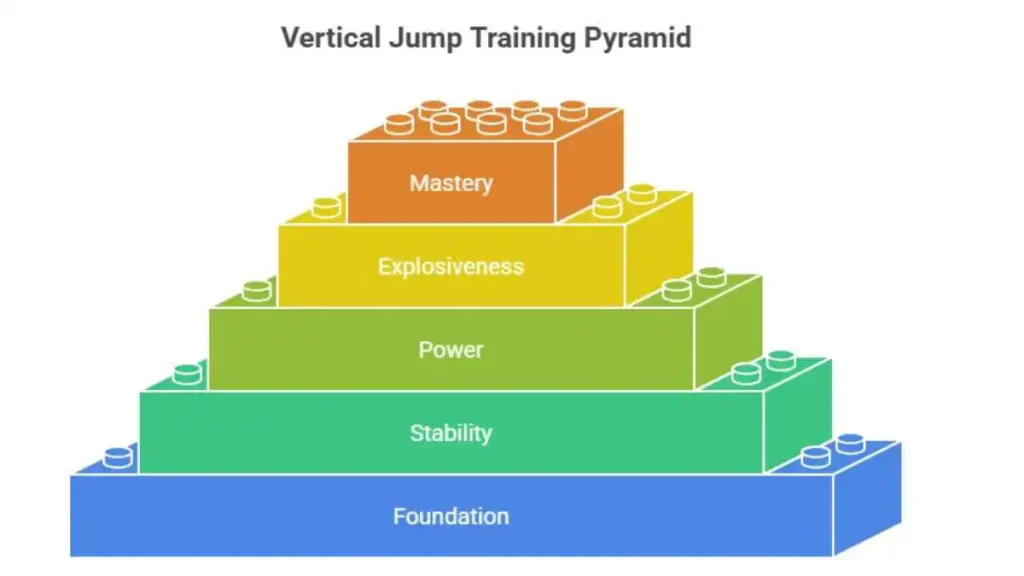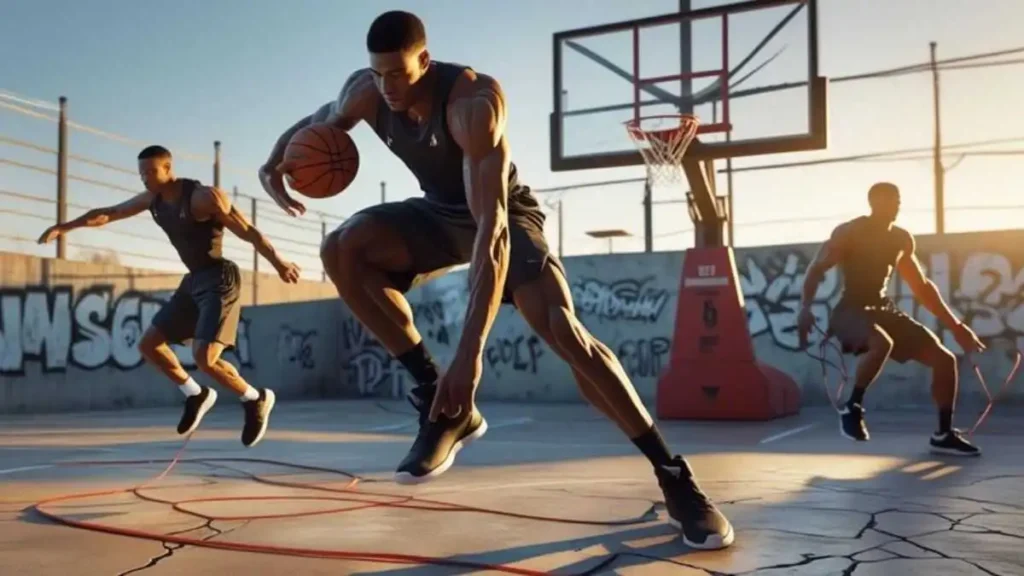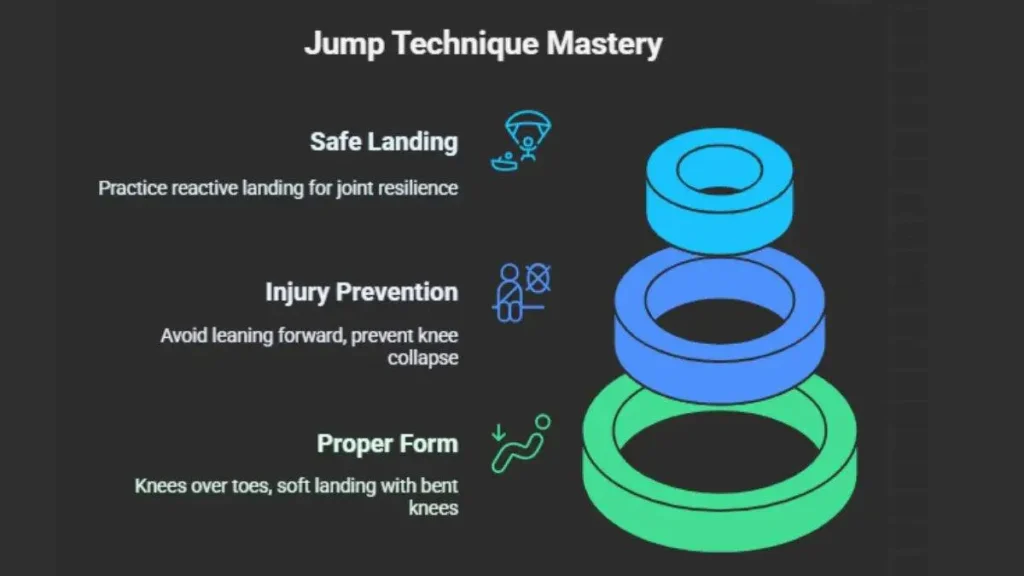If you’ve ever dreamed of soaring above the rim or blocking a shot with ease, focusing on the right exercises for higher vertical jumps can make that dream real. Whether you’re into basketball, volleyball, or soccer, having a powerful vertical can change your game. These exercises for higher vertical jumps help build explosive strength, speed, and control.
They target key muscles like your glutes, hamstrings, calves, and core to give you that extra lift. With the right plan, you can see noticeable gains in just a few weeks. The exercises for higher vertical jumps in this guide are simple yet powerful, designed for athletes of all levels who want to jump higher safely and effectively.
The Science of Vertical Jump: How Your Body Generates Explosive Power
When you jump, many parts of your body work together at once. The glutes, quads, hamstrings, and calves produce force that launches you off the ground. This teamwork of muscles is called the posterior chain workout. It’s key for strong, high jumps.
Fast-twitch muscle fibers fire during a vertical leap training session. These fibers produce quick, strong bursts. That’s why explosive power drills and functional movement training help so much. If you want to know how to increase vertical jump fast, training these fibers is the secret.
Top 10 Best Vertical Jump Exercises
To get results, you need the best exercises for higher vertical leap. These moves train your legs, core, and upper body. They give you power, balance, and better jump height. Let’s explore each one.

Squats (Goblet, Front, Back)
Squats are top of the list. They build strong legs and hips. These squat variations work your quads, hamstrings, and glutes. That means you develop functional strength for jumping. Focus on proper form for squat jumps so you don’t get hurt.
Romanian Deadlifts
This is a posterior chain workout that hits your hamstrings and glutes. It improves stability and power at the hips. That helps you generate force for a higher jump. Many say this is key for safe vertical jump training methods.
Seated Calf Raises
Your calves provide that final push-off. These calf strengthening exercises help you gain ankle strength and pop. Strong calves are critical for reactive landing technique and fast takeoff.
Lunges
Lunges build balance and single-leg strength exercises. This is vital because many jumps, especially in sports, start from one leg. It’s part of single-leg jump training for athletes.
Snap Downs
These teach quick muscle control. They’re part of explosive power drills that improve your reaction time and balance. Athletes often use snap downs in sport-specific conditioning.
Box Jumps / Hop to Box Jump
This jump higher workout builds explosiveness. You’ll improve your vertical in a short time. It’s a must in any vertical jump program for beginners.
Depth Jumps
Depth jumps are advanced plyometric exercises. They train your muscles to absorb force and jump again fast. They help with acceleration and agility training too.
Vertical Medicine Ball Throws
These medicine ball power exercises boost your upper body’s role in jumping. That helps with balance and whole-body power. It’s smart to add this to your vertical jump progression exercises.
Hang Clean
The hang clean benefits include more explosive hip drive. This helps you lift off quickly and with force. Many pro athletes use this move in their sports drills to enhance vertical leap.
Seated Box Jumps
This focuses on pure power without help from momentum. It’s perfect for building strength for functional strength for jumping.
Here’s a table that summarizes these exercises:
| Exercise | Main Benefit |
|---|---|
| Squats | Builds leg and hip strength |
| Romanian Deadlifts | Strengthens glutes and hamstrings |
| Seated Calf Raises | Boosts ankle and calf power |
| Lunges | Improves single-leg balance |
| Snap Downs | Trains muscle control |
| Box Jumps | Increases explosiveness |
| Depth Jumps | Enhances reactive strength |
| Vertical Medicine Ball Throws | Adds upper-body power |
| Hang Clean | Boosts hip drive |
| Seated Box Jumps | Builds pure leg power |
Plyometric and Explosive Drills to Boost Your Vertical
Adding plyometric exercises like jump rope and pogo jumps makes a huge difference. They activate fast-twitch fibers and build speed. Many wonder, does jump rope increase vertical? Yes! Jump rope drills for athletes improve foot speed and ankle strength.

Explosive power drills like broad jumps also help. You’ll master the broad jump technique while improving force production. If you’re curious about the difference between broad jump and vertical jump, broad jump measures distance, vertical measures height.
Form, Technique & Common Mistakes to Avoid
When you jump, your form matters as much as strength. Always keep knees over toes, and land softly with bent knees. This prevents injury and builds good habits. Experts stress the need for injury prevention in vertical jump training.

Avoid leaning forward too much or letting knees collapse inward. Learning how to land safely after a jump saves your joints. Practicing reactive landing technique builds resilience.
Designing Your Vertical Jump Training Plan
A smart plan combines strength, plyometrics, and recovery. If you’re after a vertical jump workout plan pdf, include squats, lunges, jump rope, and rest days. Vertical jump progression exercises help you move from beginner to advanced levels.
Beginners should train 2-3 times weekly. Add more as you build strength. For busy athletes, best home exercises to increase vertical jump include bodyweight squats, lunges, and jump rope. Vertical jump workout without equipment works too!
Recovery, Nutrition, and Mobility for Maximum Gains
You can’t grow stronger without recovery. Eat protein for muscle repair. Stay hydrated. Stretch daily. This supports functional movement training and keeps joints healthy.

Good sleep matters. So does foam rolling. These help you bounce back from tough workouts. Remember, tips for faster vertical jump recovery start with rest and smart food choices.
Success Stories: Athletes Who Increased Their Vertical
Many athletes across the USA have boosted their verticals using these methods. One young basketball player gained 8 inches in 12 weeks by following a 12-week vertical jump improvement plan. He focused on squats, jump rope, and plyometrics.
Another example is a volleyball player who used vertical jump for volleyball players programs. She improved her block reach by 5 inches. They both proved the power of sport-specific conditioning.
Conclusion + Your Next Steps
Now you know the top exercises for higher vertical jumps. You’ve seen the science, the moves, and real results. Start with a simple plan today. Focus on safe vertical jump training methods, eat well, rest, and watch your numbers rise.
If you want more, check out a vertical jump program for beginners or download a vertical jump workout plan pdf. Measure your gains with a vertical jump test and keep pushing forward. It’s your time to rise!
Frequently Asked Questions About Vertical Jump Training
How do I train for a higher vertical jump?
Focus on plyometric exercises, squat variations, and core stability exercises, combined with proper form and recovery.
Is a 27 inch vertical jump good?
Yes, a 27-inch vertical is solid for most athletes and above average for recreational players.
How to improve vertical jump score?
Follow a structured vertical jump workout plan pdf that mixes strength training, explosive power drills, and flexibility work.
What is the trick to jumping higher?
Master functional movement training, strengthen your posterior chain, and practice good reactive landing technique.
What is the trick to high jump?
Develop strong acceleration and agility training skills, perfect your broad jump technique, and build leg power.
How much vertical to dunk at 6 feet?
You’ll usually need a vertical jump of around 30 to 34 inches to dunk if you’re 6 feet tall.

